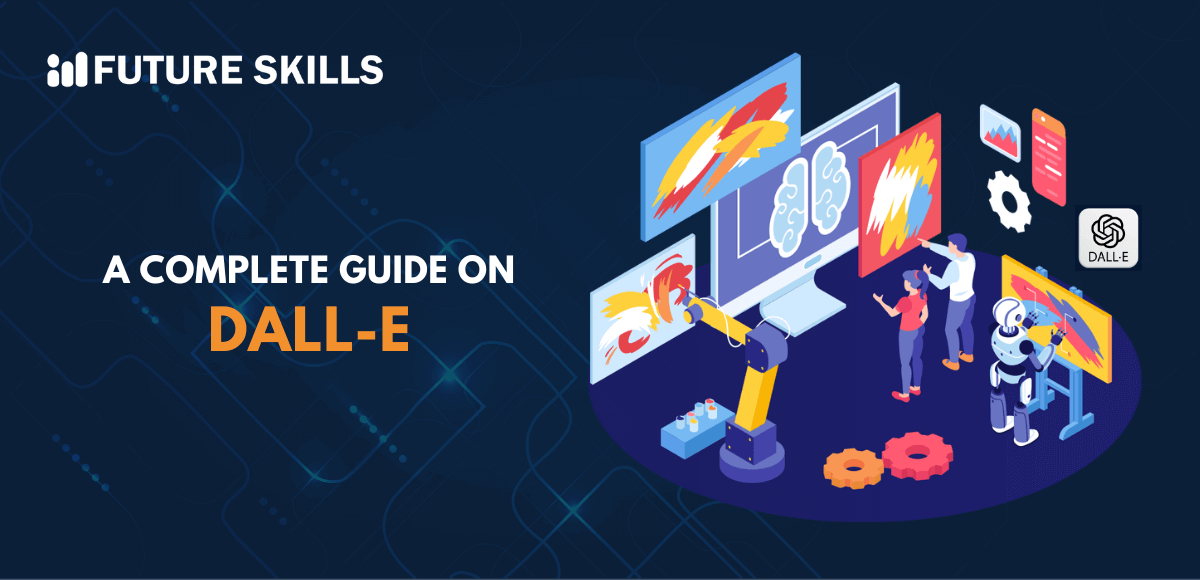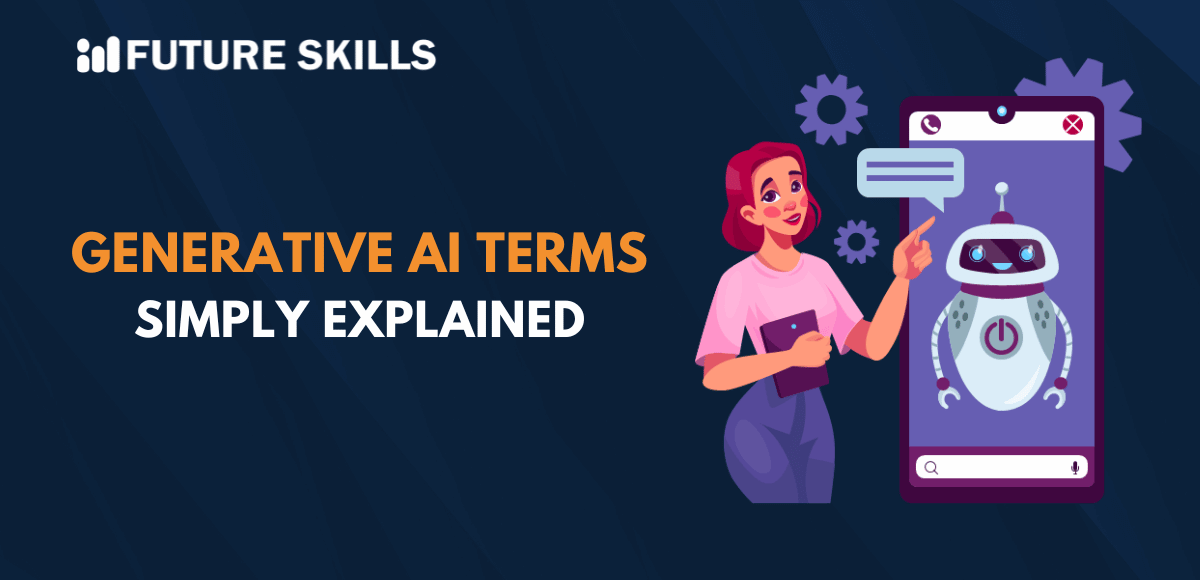OpenAI created huge waves in the world of AI with its role in creating ChatGPT. The new generative AI tool showed the power of artificial intelligence to the world with better prospects for mainstream use. Interestingly, the popularity of ChatGPT is one of the reasons behind the growing number of people who want to learn DALL-E and how it works. OpenAI has already launched the DALL-E 2 in April 2022.
On top of it, OpenAI also announced the arrival of DALL-E 3, which reached ChatGPT Plus and Enterprise customers in October 2023. However, it also creates curiosity about where it all started. DALL-E is another popular generative AI model by OpenAI that helps you use text prompts to generate high-quality images. The working mechanism of DALL-E revolves around a combination of natural language understanding and image processing. Let us learn more about DALL-E and its working mechanism.
Become a certified ChatGPT expert in just 4 weeks with Certified ChatGPT Professional (CCGP)™ Certification
Unravel the Fundamentals of DALL-E
The first step to understanding DALL-E involves learning the fundamentals of the generative AI tool. DAL-E is an AI tool by OpenAI that has impressive features for image generation. Professional artists and beginners can use DALL-E to generate high-quality images in different styles.
Another important aspect of any DALL-E guide points to the training of the generative AI model with a massive dataset, including pairs of text and images. The training process helps DALL-E to replicate different artistic styles and artworks by humans to create completely new images.
When you try to understand the working mechanism of DALL-E, you will find that it uses technologies such as deep learning models, natural language processing, and machine learning. The magic behind DALL-E use cases comes from the transformer language model at the core of DALL-E design. The transformer language model accepts text and image inputs and breaks them into smaller units or tokens. Subsequently, DALL-E compares the tokens to its training data and leverages the results to generate original and unique images.
DALL-E uses the language model just like GPT models. It uses textual descriptions as inputs from users and then processes the prompts to determine the intent and generate desired images. More specifically, DALL-E utilizes a transformer neural network, particularly the GPT-3 architecture and the unsupervised learning approach.
Build ChatGPT skills and take the first step to becoming superhuman with our free ChatGPT and AI Fundamental Course
Origins of DALL-E
One of the best ways to understand the fundamentals of DALL-E involves learning about its origins. Where did the concept of DALL-E come from? OpenAI launched ChatGPT in 2022, and it gained a lot of attention within a short span of time. The generative AI tool garnered almost 1 million users within five days of its launch.
You might wonder how the answers to queries like “How do I use DALL-E?” are relevant to the origins of DALL-E. The adoption of ChatGPT helped OpenAI focus on the possibilities of using GPT-3 model to come up with high-quality images. DALL-E is a variant of the GPT-3 model trained with a custom dataset of images. It has been fine-tuned and optimized, particularly for image generation.
The name ‘DALL-E’ also has specific attributes related to art and robotics. One part of the name comes from the renowned artist Salvador Dali. The other part, i.e., the ‘E,’ comes from the adorable robot in the Pixar movie Wall-E. It is also important to note that DALL-E has evolved continuously. The new versions come with advanced features. For example, DALL-E 3 is available as an integration with ChatGPT Plus, thereby ensuring better accessibility.
Excited to understand the crucial requirements for developing responsible AI and the implications of privacy and security in AI, Enroll now in the Ethics of Artificial Intelligence (AI) Course
How Does DALL-E Work?
Generative AI tools such as DALL-E leverage a specific architecture that helps them process user prompts and generate desired outputs. Before you dive deeper into every DALL-E application, it is important to understand its architecture. On top of it, you must also find out how DALL-E architecture is different from the conventional image generation models.
-
DALL-E Architecture
You must know that DALL-E depends on the GPT-3 architecture, featuring a combination of neural networks and transformer models. The transformer model helps DALL-E take in text descriptions as inputs and then implements natural language processing. For example, it can process inputs and determine users’ intent. Subsequently, it uses the information to generate images or modify existing images.
You would find a prominent difference between DALL-E examples and other image generation models due to their architecture. The GPT-3 architecture is more capable of extracting context alongside identification of relationship between the words. With such a unique capability, DALL-E can craft new images that closely match the prompts you offer them.
Another important highlight in the working of DALL-E points is the use of CLIP neural network. The CLIP or Contrastive Language-Image Pre-training neural network can help in predicting the relationship between textual inputs and visual representations. In a way, CLIP empowers DALL-E use cases with the assurance of creating images that perfectly fit users’ requirements. CLIP helps DALL-E reduce the concerns of randomness in generated images.
-
Role of Autoencoder Architecture
You would also come across the autoencoder architecture in explanations about working mechanisms of DALL-E. The autoencoder architecture leverages two important components: the encoder and the decoder. Encoders transform the input data to low-dimensional representation alongside retaining the key features and traits of the data. On the other side, decoder takes the low-dimensional representation by the encoder and leverages it to generate new outputs.
-
Importance of Latent Space Representation
The list of important concepts in a DALL-E guide also includes latent space representation. It is an event that happens when encoder reduces the dimensions of the input data without sacrificing the core attributes and features. Latent space representation involves compression of input data into a latent space to enable easier processing and analysis by leveraging deep learning models. The working of DALL-E involves the encoder breaking down the text prompts into small inputs and then transforming them into low latent representation. The decoder uses the low latent representation to create new images.
Conversion of input data to low latent representation helps DALL-E in processing the core attributes and features with better efficiency. For example, converting a text prompt into vector representation ensures that the underlying model, such as CLIP, can work on processing words and phrases alongside mapping them to particular images. On top of it, DALL-E neural networks can also emphasize different positions in a latent vector representation, thereby supporting the generation of different variations of images.
-
Training Process of DALL-E
The next crucial aspect you need to cover to understand the working mechanism of DALL-E is the training process. You must know how DALL-E goes through training and the type of data used to train the generative AI model. During the training process, DALL-E utilizes datasets with image and text pairs. The training data serves as the foundation of every DALL-E application, which can receive image and text prompts as a single data stream. Subsequently, the data can be broken down into smaller tokens.
The pre-training process of DALL-E also involves comprehensive and diverse datasets that improve the capabilities of the generative AI tool. It supports the neural network in achieving better results in natural language processing tasks alongside processing different visual prompts. The diverse datasets used for training DALL-E can help in effective management of different user inputs alongside generating images in different styles.
How Can You Use DALL-E in the Real World?
The uses of DALL-E in the real world can help you understand its potential more. You should learn the examples for “How do I use DALL-E?” in the real world to identify how DALL-E serves different industries. For instance, you can use DALL-E as a trusted tool to teach abstract concepts by generating visual aids. It can help students understand historical events or complex concepts.
DALL-E can also serve valuable use cases in the field of marketing by creating custom images for different ad campaigns. Marketers can use creative briefs as prompts to come up with unique graphics rather than using stock photos or investing time and effort in designing new graphics.
The list of DALL-E examples in the real world also involves the ways in which designers can leverage DALL-E. It can generate initial drafts or custom artwork according to specific descriptions for a faster creative process. For example, authors can use DALL-E to come up with appealing illustrations for their books.
Embark on a transformative journey into AI, unlocking career-boosting superpowers through our Certified AI Professional (CAIP)™ Certification program.
What are the Different Styles of Images Generated by DALL-E?
DALL-E can produce images in different styles according to your prompts. It is important to note that different prompts can generate different creative outcomes. Anyone who wants to learn DALL-E must weigh its capabilities to understand its true potential for creativity. The common image styles that you can generate with DALL-E include photorealism, surrealism, and mosaic styles. Each type of image style has a distinctive visual appeal, which makes DALL-E different from the conventional image generation models.
Is DALL-E Suitable Only for Image Generation?
The basic description of DALL-E shows that it can be useful only for image generation. However, it is also important to understand that the DALL-E application in the real world can transform many other industries. For example, DALL-E can serve as a powerful force of change in the domain of medical services, finance, law enforcement, product design, and software development.
DALL-E can help improve the medical sector by generating and remodeling X-ray images. However, the applications of DALL-E in the medical industry are still in the initial stages. In the domain of finance, DALL-E can create visual representations of data, thereby helping people develop a better understanding of financial information. Furthermore, DALL-E use cases in law enforcement can involve generation of sketches of suspects with the help of text prompts. In addition, DALL-E can also help in generating visual aids for training police officers.
Does DALL-E Have Any Limitations?
DALL-E might be one of the most popular generative AI tools with a diverse range of advantages. However, any DALL-E guide would be incomplete without referring to their limitations. Some of the prominent concerns associated with DALL-E include unpredictability, job displacement, IP rights violation, and content moderation.
DALL-E can create images with text prompts. However, there is no way the model can control the output. It can generate harmful, inappropriate, or offensive images without proper moderation. DALL-E uses training data to generate new images, which can lead to potential concerns about copyright infringement.
Final Words
The functionalities of DALL-E have evolved continuously with the introduction of new variants such as DALL-E 2 and DALL-E 3. On top of it, the different DALL-E examples in terms of artwork style and uses in the real world prove that it is more than just an AI tool to generate images. Graphic designers can use DALL-E to come up with genuine and unique designs, while law enforcement officers can generate sketches of suspects. At the same time, it is also important to keep an eye on the limitations of DALL-E before using it. Learn more about the advantages of DALL-E and explore its functionalities with real-world examples right now.






